Craving red rock views, desert hikes, and epic outdoor adventures? In this post, I’ll share the red rock canyons, desert trails, and ancient ruins in Arizona’s parks—where every landscape glows with the magic of the Southwest. These Arizona parks are packed with stunning landscapes, family-friendly trails, and unforgettable nature experiences.
If you are in a hurry, I recommend:
Unique Arizona Parks
1. Alamo Lake State Park - 2 hours and 15 minutes northwest of Phoenix
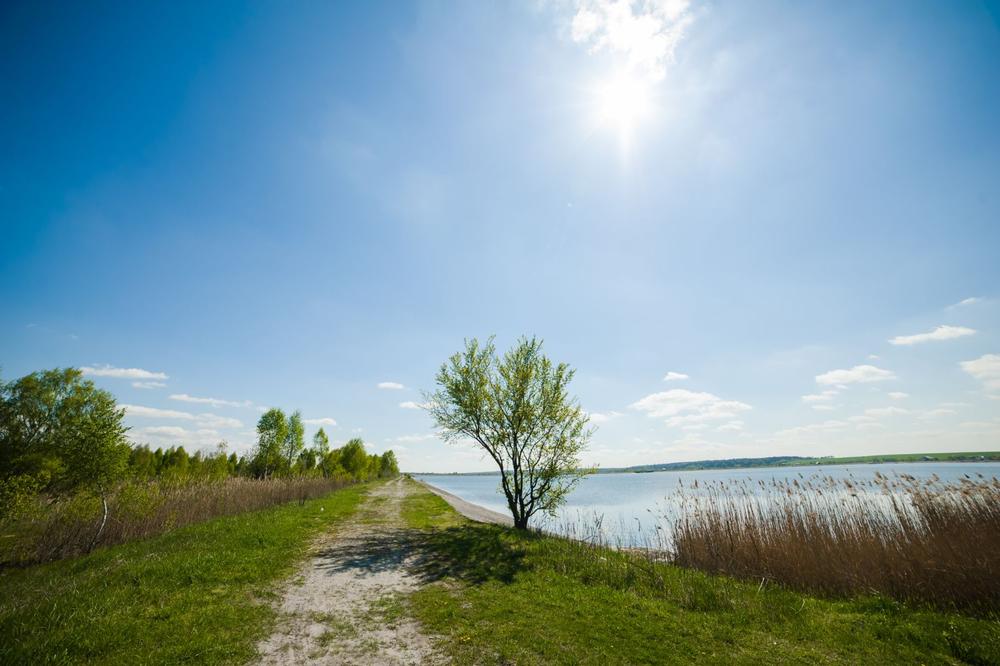
Location:
Wenden, AZHighlights:
Want to get far from crowds and close to nature? Alamo Lake State Park is a peaceful desert escape perfect for fishing, wildlife spotting, and stargazing under Arizona’s clearest skies.Recommended For:
Anglers, wildlife watchers, stargazers, nature photographers, and campers who prefer remote, scenic solitude.What I Love: ♥
Crystal-clear lake views, incredible bass fishing, and spring wildflowers framed by rugged desert mountains.- Fish one of Arizona’s best bass lakes, teeming with largemouth bass, crappie, and catfish.
- Watch for wildlife including deer, burros, coyotes, and even bald and golden eagles near the shore.
- Camp under some of the darkest skies in the state—perfect for stargazing and astrophotography.
- Hike around desert trails where spring rains bring colorful wildflowers to life among the cactus-studded hills.
Cost:
$10–$15 per vehicle for day use; camping and cabin rates varyBest time to visit:
Spring for wildflowers and active wildlife; fall and winter for mild temperatures and clear skiesLocal tips:
Bring plenty of water and supplies—this remote park is truly off the grid!Distance:
2 hours and 15 minutes northwest of Phoenix, AZHow to Get to Alamo Lake State Park:
From Phoenix, take US-60 W to Wenden, then head north on Alamo Rd. Follow signs for about 30 miles to the park entrance.Address:
Alamo Rd, Wenden, AZ 85357Phone: 928-669-2088
2. Boyce Thompson Arboretum - 1 hour east of Phoenix, AZ
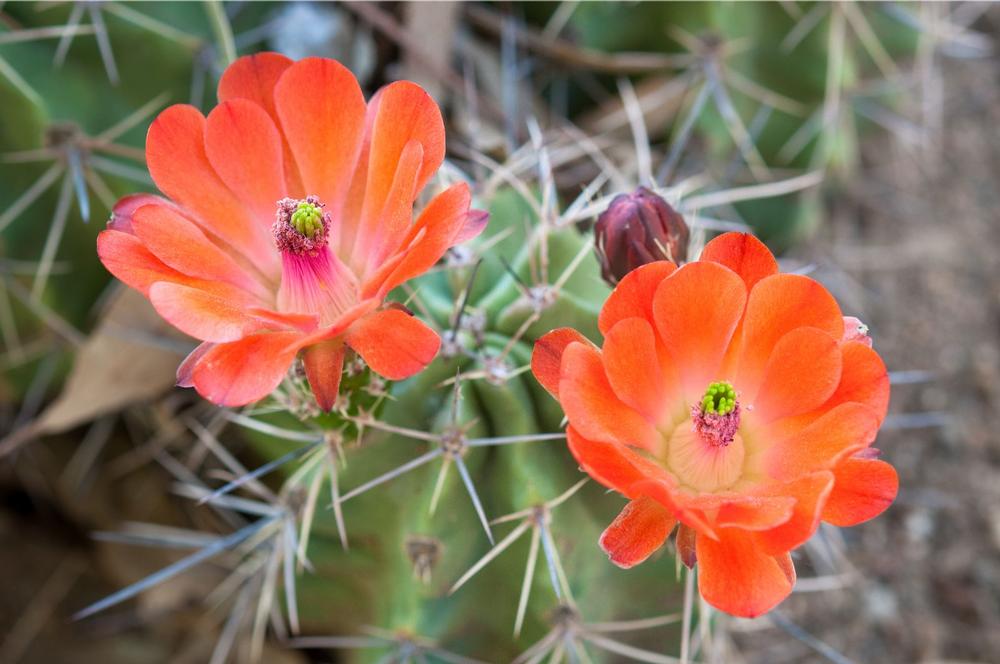
Location:
Superior, AZHighlights:
Looking for a peaceful, plant-filled oasis in the Sonoran Desert? Boyce Thompson Arboretum is a stunning showcase of desert biodiversity, perfect for a day of quiet exploration.Recommended For:
Nature lovers, photographers, hikers, plant enthusiasts, and anyone seeking beauty and serenity in the desert.What I Love: ♥
Global desert plant collections, scenic trails through lush canyons, and historic roots dating back to the 1920s.- Explore 3 miles of scenic trails winding through cactus gardens, hidden canyons, and riverside forest.
- Discover over 3,900 plant species from deserts around the world, including Africa, Australia, and the Americas.
- Enjoy natural features like a desert lake, specialty gardens, and dramatic mountain backdrops.
- Learn about the Arboretum’s fascinating history, founded by mining magnate Col. William Boyce Thompson.
Cost:
General admission $15 (adults), discounts for children, seniors, and militaryBest time to visit:
Fall through spring for mild temperatures and blooming desert plantsLocal tips:
Arrive early for soft morning light—ideal for photography and birdwatching along shaded trails.Distance:
1 hour east of Phoenix, AZHow to Get to Boyce Thompson Arboretum:
From Phoenix, take US-60 E toward Globe. The arboretum entrance is just west of the town of Superior, clearly marked along the highway.Address:
37615 E US Highway #60, Superior, AZ 851733. Buckskin Mountain State Park - 2 hours west of Phoenix

Location:
Parker, AZHighlights:
Want river views, mountain trails, and year-round fun? Buckskin Mountain State Park is a beautiful escape for campers, hikers, and water lovers right along the Colorado River.Recommended For:
Families, RV campers, boaters, jet skiers, hikers, and snowbirds seeking warm winter weather and riverfront beauty.What I Love: ♥
Stunning Colorado River views, activity-packed grounds, and seasonal fun from summer swimming to winter hiking.- Camp with riverside views, at a full campground with amenities or in the quieter River Island area nearby.
- Swim & boat from the sandy beach or boat ramp—ideal for jet skiing, kayaking, and tubing in summer.
- Hike scenic desert trails through the Buckskin Mountains with views of river bends and rocky ridges.
- Enjoy picnic areas, courts for volleyball and basketball, a playground, arcade, restaurant, and park store.
Cost:
$10–$15 per vehicle for day use; camping and River Island site fees vary by seasonBest time to visit:
Summer for river sports; winter for mild hiking and off-season campingLocal tips:
River Island fills quickly on weekends—arrive early or plan a mid-week visit for more peace and space.Distance:
2 hours west of Phoenix, AZHow to Get to Buckskin Mountain State Park:
From Phoenix, take I-10 W to AZ-72 W, then head north on AZ-95 toward Parker. Follow signs to the park entrance at milepost 147.Address:
5476 N Highway 95, Parker, AZPhone: 928-667-3231
4. Canyon de Chelly National Monument - 4 hours and 45 minutes northeast of Flagstaff

Location:
Chinle, AZHighlights:
Looking for awe-inspiring landscapes steeped in ancient culture? Canyon de Chelly National Monument blends natural beauty and Native American heritage in one of Arizona’s most sacred places.Recommended For:
History lovers, hikers, photographers, cultural travelers, and anyone seeking a deeper connection to the Southwest’s past and present.What I Love: ♥
Towering sandstone cliffs, ancient ruins like White House and Mummy Cave, and the iconic Spider Rock rising 800 feet from the canyon floor.- Visit scenic overlooks along North and South Rim Drives for panoramic views of the canyon and ruins.
- Learn about Navajo culture from guides who live and work in the canyon—many tours are Navajo-led.
- Hike to White House Ruins, one of the few self-guided trails allowed into the canyon.
- Marvel at prehistoric rock art, cliff dwellings, and geological wonders shaped over millennia.
Cost:
Free to enter; guided canyon tours available for a feeBest time to visit:
Spring and fall for mild temperatures and clear canyon viewsLocal tips:
To go beyond the rim overlooks, book a Navajo-guided jeep or horseback tour—required to access the canyon floor.Distance:
4 hours and 45 minutes northeast of Flagstaff, AZHow to Get to Canyon de Chelly National Monument:
From Flagstaff, take US-89 N to US-160 E, then follow US-191 S to Chinle. The monument entrance is just off the highway.Address:
Highway 191, Chinle, AZ 86503Arizona Parks for Couples
5. Catalina State Park, Arizona - just 30 minutes north of downtown Tucson
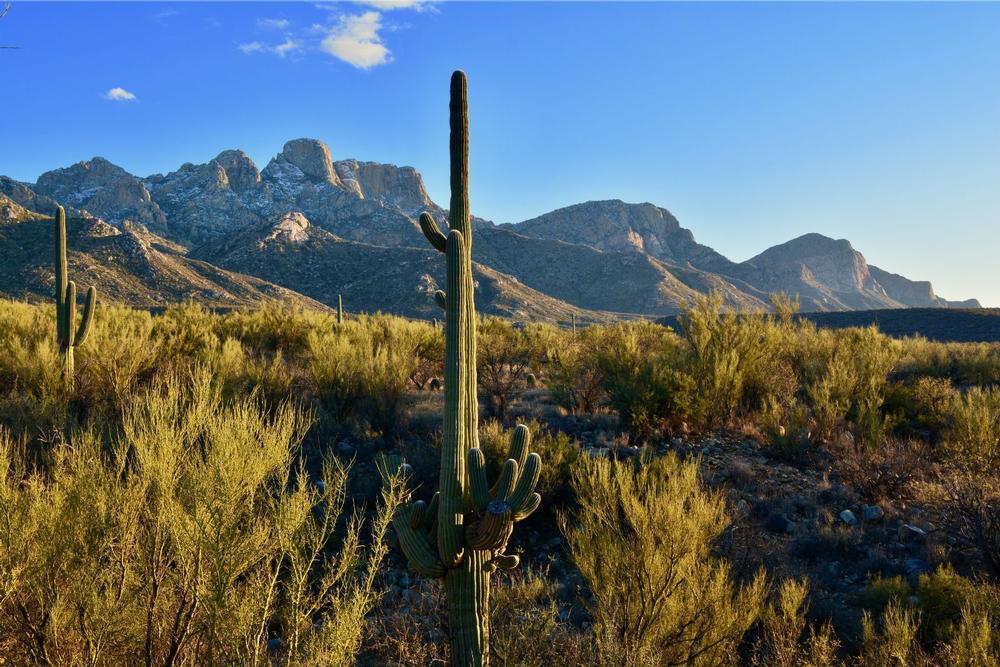
Location:
Tucson, AZHighlights:
Looking for mountain views, desert trails, and a sky full of birds? Catalina State Park is Tucson’s backyard wilderness—ideal for hiking, camping, and saguaro-studded sunsets.Recommended For:
Hikers, birders, photographers, campers, equestrians, and anyone who loves the Sonoran Desert landscape.What I Love: ♥
Towering saguaros, epic trails into Coronado National Forest, and 150+ bird species soaring through the canyons.- Hike or ride miles of trails that climb foothills, cross streams, and connect to high-elevation national forest routes.
- Camp beneath the stars in scenic desert surroundings with mountain views and quiet night skies.
- Spot over 150 bird species—Catalina is a must-visit for birdwatchers year-round.
- Explore lush riparian areas, cactus forests, and rugged canyon terrain all within a short drive from Tucson.
Cost:
$7 per vehicle weekdays, $10 weekends; camping fees varyBest time to visit:
Late fall through early spring for cooler temps and active wildlifeLocal tips:
The Romero Pools Trail is a local favorite—bring water and expect a steep but rewarding climb.Distance:
30 minutes north of downtown Tucson, AZHow to Get to Catalina State Park:
From Tucson, head north on Oracle Rd (AZ-77) for about 15 miles. The park entrance is on the right just past the town of Oro Valley.Address:
11570 N Oracle Rd, Tucson, AZ 857376. Chiricahua National Monument
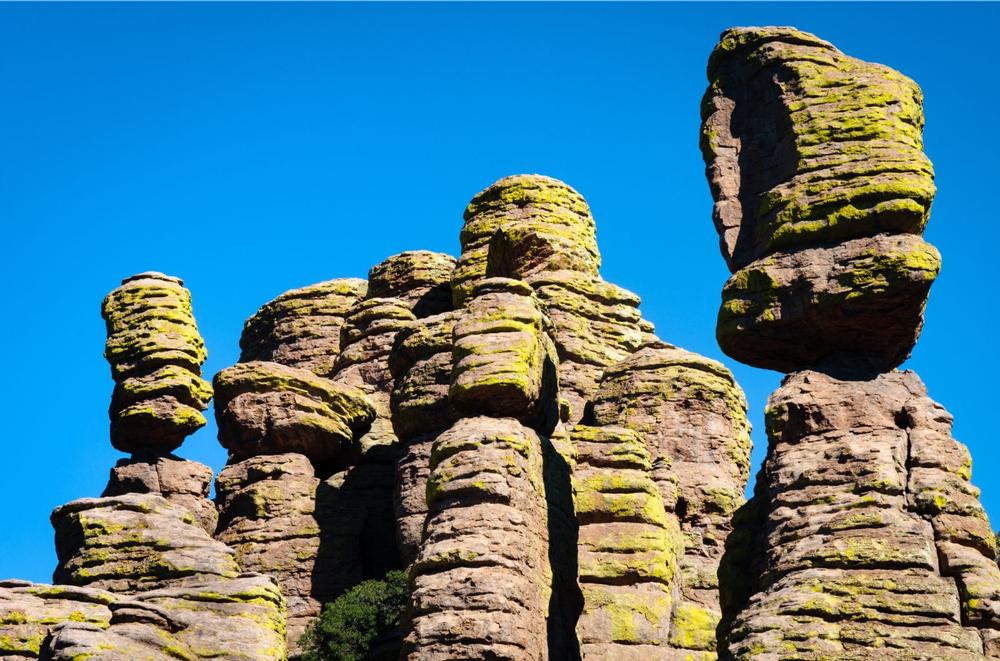
Location:
Willcox, AZHighlights:
Ever wanted to wander through a forest of stone? Chiricahua National Monument is a hidden gem packed with towering rock spires, scenic canyons, and unforgettable desert mountain views.Recommended For:
Hikers, geology buffs, photographers, solitude seekers, and anyone looking to explore one of Arizona’s most dramatic landscapes.What I Love: ♥
Surreal volcanic rock formations, peaceful trails through Echo Canyon, and the feeling of true wilderness far from the crowds.- Drive the 8-mile scenic route for easy access to spectacular overlooks and rock gardens.
- Hike 17 miles of trails including the Echo Canyon Loop—great for up-close views of the spires.
- Learn the history of the Chiricahua Apaches and the volcanic origins of this “standing rock” landscape.
- Visit cultural landmarks and preserved historical sites tucked within the monument’s remote terrain.
Cost:
Free admission; no entrance feeBest time to visit:
Spring and fall for moderate temperatures and fewer visitorsLocal tips:
Bring extra water, sturdy shoes, and sun protection—this remote park has minimal services but maximum views!Distance:
2 hours southeast of Tucson, AZHow to Get to Chiricahua National Monument:
From Tucson, take I-10 E to Willcox, then head south on AZ-186. Turn left onto Bonita Canyon Rd and follow it into the monument.Address:
E Bonita Canyon Rd, Willcox, AZ 85643Phone: 520-824-3560
7. Dead Horse Ranch State Park - 1 hour and 45 minutes north of Phoenix
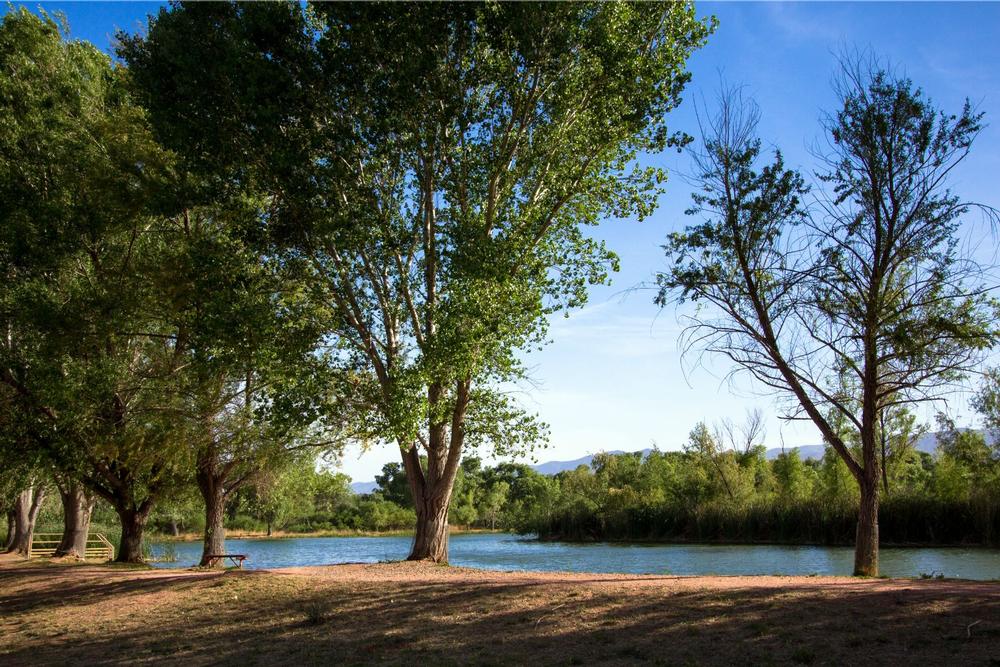
Location:
Cottonwood, AZHighlights:
Looking for lush river trails and epic birdwatching in the high desert? Dead Horse Ranch State Park is a peaceful Verde Valley escape with hiking, camping, and festivals that celebrate nature.Recommended For:
Birders, families, hikers, nature lovers, and campers looking for shade, scenery, and outdoor events.What I Love: ♥
Easy access to the Verde River, top-notch birdwatching, and direct trail connections to Coconino National Forest.- Explore 10 miles of scenic hiking trails, with trailheads that connect to forest routes and desert viewpoints.
- Camp in one of 150 well-maintained sites or gather at one of 23 group campgrounds for a group adventure.
- Join the annual Verde Valley Birding & Nature Festival every April, nicknamed the “Birdy Verde.”
- Celebrate Verde River Day with fun family activities and environmental education focused on riparian habitat conservation.
Cost:
$7–$10 per vehicle for day use; camping and group rates varyBest time to visit:
Spring and fall for festivals, mild weather, and ideal birdwatching conditionsLocal tips:
Bring binoculars and a checklist—the park is a major stop on Arizona’s birding trail network!Distance:
1 hour and 45 minutes north of Phoenix, AZHow to Get to Dead Horse Ranch State Park:
From Phoenix, take I-17 N to AZ-260 W toward Cottonwood. Turn onto Main St, then follow signs to Dead Horse Ranch Rd and the park entrance.Address:
675 Dead Horse Ranch Rd, Cottonwood, AZ 86326Arizona Parks for Families
8. Fool Hollow Lake Recreation Area - 3 hours northeast of Phoenix

Location:
Show Low, AZHighlights:
Craving cool pine-scented air, lakeside views, and great fishing? Fool Hollow Lake Recreation Area is a high-country haven for campers, anglers, and nature lovers alike.Recommended For:
Anglers, campers, families, birdwatchers, and those looking for a quiet lakeside retreat in the forest.What I Love: ♥
Crystal-clear mountain lake, excellent year-round fishing, and shaded campgrounds right by the water.- Camp under tall pines near the lake with full hookups, tent sites, and picnic areas available.
- Fish for rainbow trout, bass, crappie, catfish, and more—especially productive in summer months when the lake is stocked.
- Hike scenic trails that meander along the lake’s edge, ideal for wildlife spotting and peaceful morning walks.
- Enjoy year-round boating, kayaking, and lakeside relaxation at 6,300 feet elevation in the Apache-Sitgreaves National Forest.
Cost:
$7–$10 per vehicle for day use; camping fees vary by site and seasonBest time to visit:
May through September for stocked trout fishing; fall for golden aspens and fewer crowdsLocal tips:
For the best rainbow trout catch, hit the lake early in the morning from mid-May through September when it’s freshly stocked.Distance:
3 hours northeast of Phoenix, AZHow to Get to Fool Hollow Lake Recreation Area:
From Phoenix, take AZ-87 N to Payson, then continue on AZ-260 E toward Show Low. Follow signs to Fool Hollow Rd and the park entrance.Address:
1500 Fools Hollow Rd, Show Low, AZ 85901Phone: 928-537-3680
9. Glen Canyon National Recreation Area - 4 hours and 30 minutes north of Flagstaff
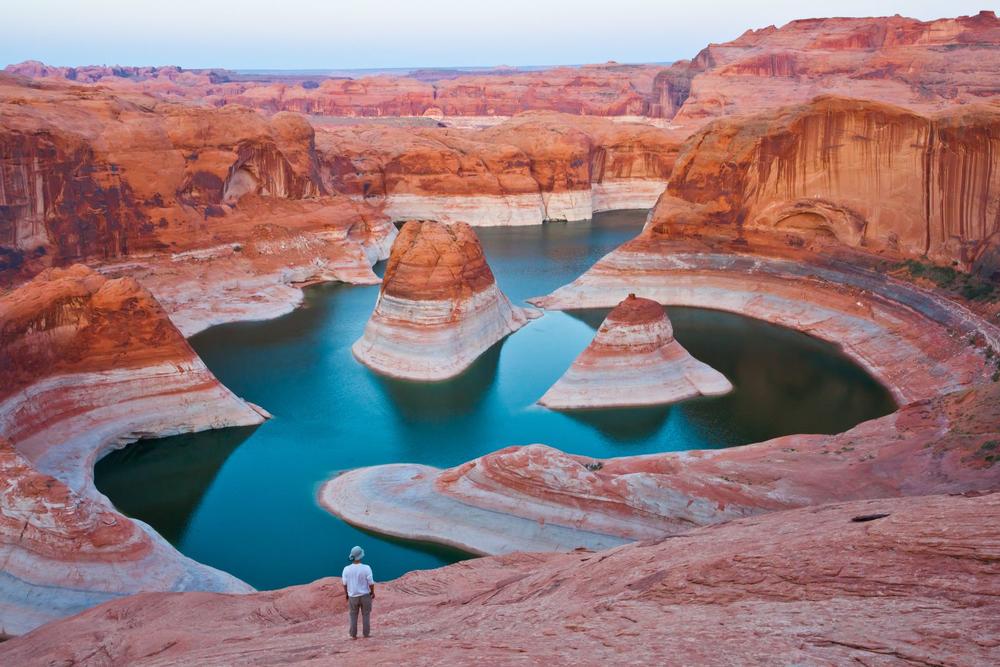
Location:
Lake Powell, UT / Northern ArizonaHighlights:
Dreaming of red rock canyons, endless water, and epic adventures? Glen Canyon National Recreation Area is a massive playground for both land and water explorers centered around the stunning Lake Powell.Recommended For:
Boaters, kayakers, campers, anglers, hikers, photographers, and history buffs interested in natural and cultural wonders.What I Love: ♥
Over 2,000 miles of shoreline, hidden canyons, crystal-clear water, and ancient archaeological sites scattered across a 1.2 million-acre landscape.- Explore Lake Powell by boat, kayak, or paddleboard—perfect for cliff jumping, hidden coves, and photo-worthy views.
- Fish for bass, crappie, trout, and catfish in deep, clear waters teeming with life.
- Discover ancient petroglyphs, ruins, and geological formations dating back thousands of years.
- Enjoy hiking, mountain biking, horseback riding, and camping in remote corners of this vast recreation area.
Cost:
$30 per vehicle for a 7-day pass (Lake Powell entry); other fees apply for marina services and permitsBest time to visit:
Spring and fall for mild weather and fewer crowds; summer for peak boating seasonLocal tips:
Rent a houseboat or kayak in advance—Lake Powell is vast, and overnight adventures are unforgettable.Distance:
4 hours and 30 minutes north of Flagstaff, AZ to Bullfrog MarinaHow to Get to Glen Canyon National Recreation Area:
From Flagstaff, take US-89 N to Page for southern access. For Bullfrog Marina, continue north on US-89 into Utah and follow signs via UT-276.Address:
4304 Bullfrog, Lake Powell, UT 84533Phone: 928-608-6200
10. Grand Canyon National Park
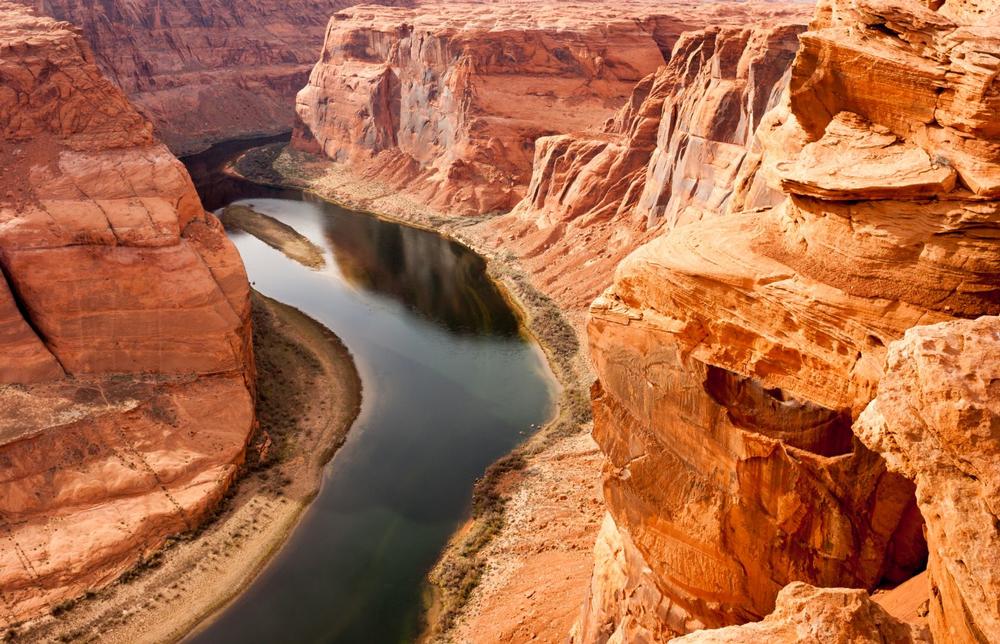
Location:
Northern ArizonaHighlights:
Want to stand at the edge of one of the world’s greatest natural wonders? Grand Canyon National Park offers jaw-dropping vistas, epic adventures, and a humbling look into geologic time.Recommended For:
First-time visitors, hikers, photographers, history lovers, rafters, and anyone craving iconic Southwest scenery.What I Love: ♥
Over a mile deep, 277 miles long, and full of unforgettable views—this UNESCO World Heritage Site is both timeless and ever-changing.- Visit the South Rim for the most iconic overlooks, easy access, visitor centers, and shuttle services year-round.
- Explore the quieter North Rim for higher elevation hikes and fewer crowds—open seasonally from mid-May to mid-October.
- Hike into the canyon on trails like Bright Angel or South Kaibab, or go rim-to-rim if you're up for the challenge.
- Raft the Colorado River or ride a mule to Phantom Ranch—unforgettable ways to see the canyon from below.
Cost:
$35 per vehicle for a 7-day pass; annual and interagency passes acceptedBest time to visit:
Spring and fall for mild temperatures; summer for full access; winter for snowy views and fewer crowdsLocal tips:
Sunrise and sunset from Desert View or Hopi Point are unforgettable—get there early for a good spot!Distance:
3 hours and 30 minutes north of Phoenix, AZ (to South Rim)How to Get to Grand Canyon National Park:
From Phoenix, take I-17 N to Flagstaff, then follow US-180 W to AZ-64 N toward the South Rim. For the North Rim, take US-89 N through Page and follow AZ-67 S.Address:
Grand Canyon National Park, AZ📔 I get asked this a lot so I decided to include it:
- What natural attractions can be found in Arizona?
- From rust-red cliffs, towering rock formations, and massive living castles to huge lakes, ancient pueblos, and historic missions, Arizona is full of spectacular parks and monuments.
- Which Arizona parks are world-famous?
- Some, like the Grand Canyon (Video), are world-known, while others are hidden gems typically enjoyed by locals only.
- What do Arizona parks protect?
- Arizona parks protect its natural wonders, native cultures, spectacular geological forms, rare plants, and thousands of years of history.
- Are Arizona parks good for adventure seekers?
- Each is worthy of a visit, whether you are having a scenic drive or an adrenaline-pumping hike.
🌤 Best Time to Visit Arizona State & National Parks
- March to May – Pleasant temperatures, blooming wildflowers, and ideal hiking conditions.
- September to November – Cooler weather, fewer crowds, and stunning fall foliage in higher elevations.
- June to August – Hot temperatures, but great for exploring higher-altitude parks and lakes.
- December to February – Mild winters perfect for desert hikes and lower-altitude adventures.
- Late March – A prime window for catching wildflower blooms and enjoying cooler hikes.
Map:
Plan Your Trip


